Reaching out to investors can feel like a black box. You send emails, track names, maybe even manage a spreadsheet, but real traction often depends on using the right tools.
Luckily, there are platforms built specifically to help you. Some focus on warm introductions, others on deal tracking, onboarding, or engagement. The right solution fits within your investor relations strategy and simplifies how you build and maintain relationships.
This article explores five investor relations tools, each tied to a specific use case. Whether you're focused on outreach, onboarding, or analytics, you'll learn what each platform offers and how it fits into your workflow.
What Are Investor Relations Tools?
Investor relations (IR) tools help you manage communication and build stronger relationships with current and potential investors. They bring structure to your process so you’re not relying on memory, scattered spreadsheets, or missed follow-ups.
These platforms support your investor relations program by centralizing everything in one place. You can track conversations, store documents, prepare updates, and manage outreach without switching between tools.
These tools can help you:
- Track conversations, calls, and follow-ups without losing momentum
- Share updates, documents, or financial reports without clogging email threads
- Stay on top of who’s engaged and who needs a nudge
Some platforms lean into warm outreach. Others prioritize reporting, IR CRM (customer relationship management) functions, or analytics. A few combine all of it into a single platform that can support everything from personalized outreach to stakeholder updates.
Choosing the right tool depends on your goals, your stage, and how you currently manage investor communications.
5 Top Investor Relations Tools by Use Case
Some tools help you connect with new investors. Others focus on tracking conversations, improving shareholder confidence, or supporting environmental, social, and governance (ESG) initiatives.
Check out the five essential IR tools that help you move faster and stay focused.
1. Village—Best for Outreach and Warm Introductions
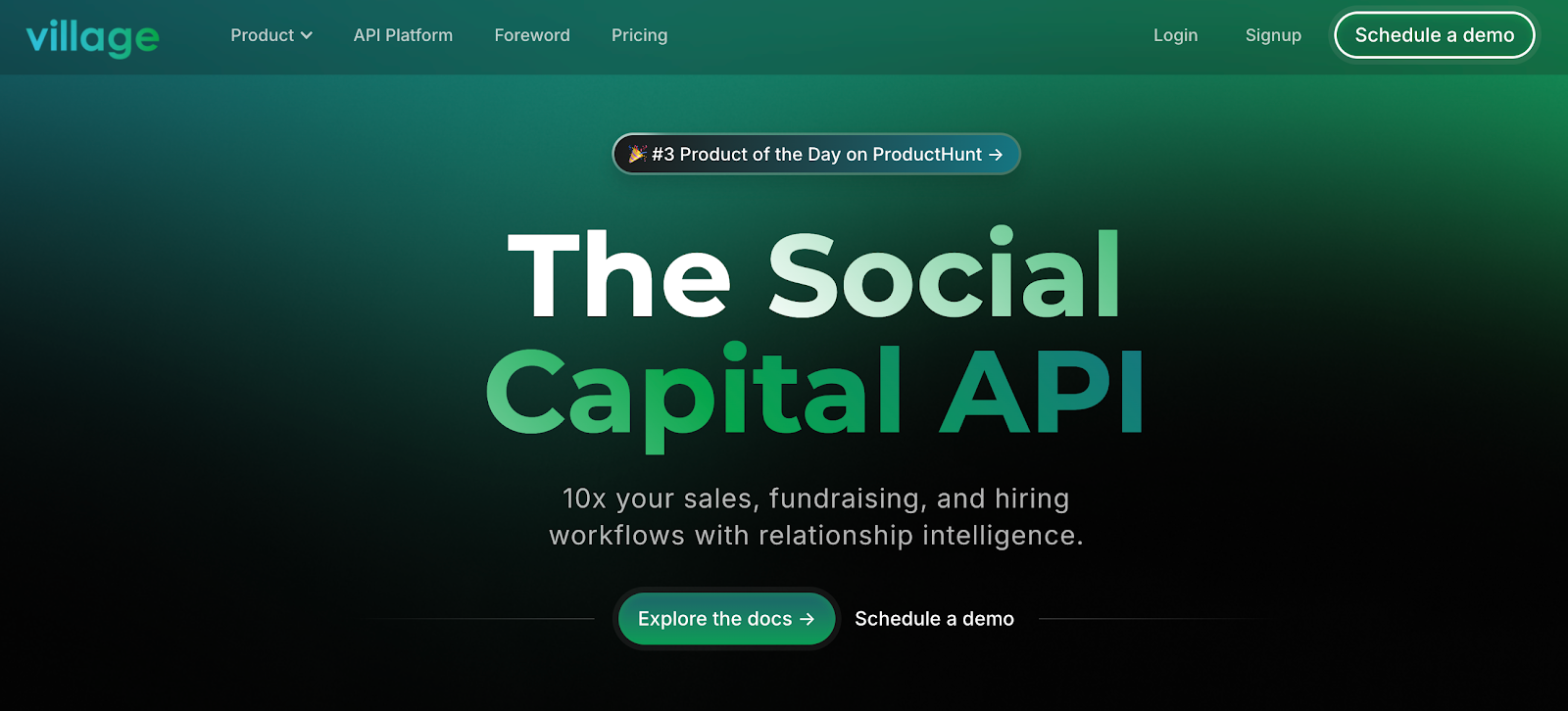
Outreach can stall when investors don’t know you. Village solves that problem by helping you reach the right people through warm introductions.
Village uses relationship intelligence to map who in your network can introduce you to the venture capitalists (VCs), limited partnerships (LPs), or venture capital funds you’re trying to reach.
It syncs with your calendar, CRM, contacts, and LinkedIn to surface trusted second- and third-degree connections, then scores each path based on trust and context.
Key Features
- AI-powered search across 700M+ profiles and 14,000+ investor networks
- Kanban boards, team notes, and CRM sync for pipeline management
- Introlinks: let anyone search your network for double-opt-in intros
- Personalized email templates and enrichment tools built in
- API platform for platform embedding and CRM integration
Village is built for founders, fund managers, and platform teams who rely on investor engagement to drive fundraising. It shifts the strategy from cold outreach to targeted introductions that actually get responses.
Pricing
- Trial: Free
- Essentials plan: $19 per month
- Pro plan: $39 per month
- Premium plan: $119 per month
Try Village for free and turn your network into investor conversations.
2. Nasdaq IR Insight—Best for Public Company Reporting and Engagement
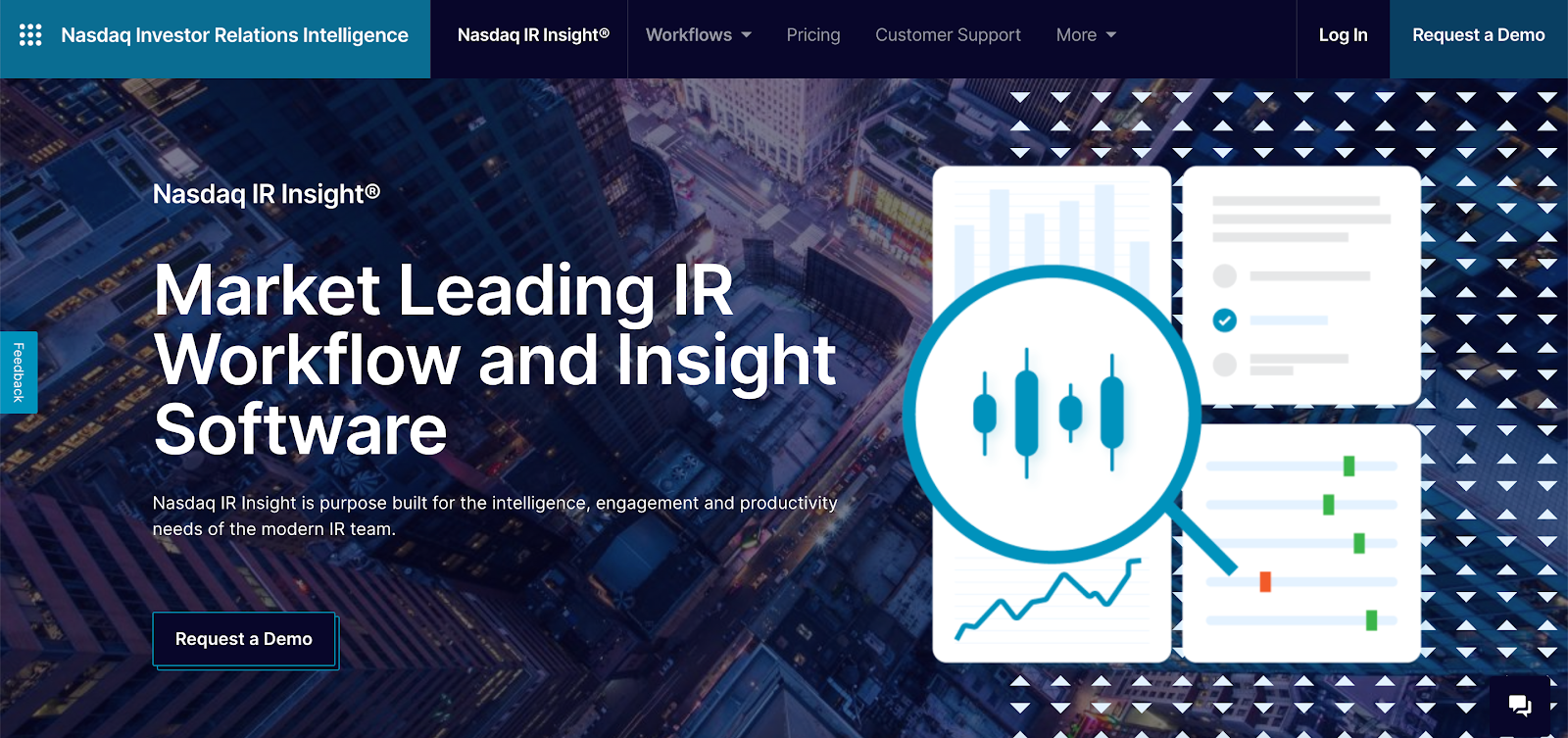
If you work on a public IR team, staying ahead of market trends and managing stakeholder engagement is part of the job. Nasdaq IR Insight brings everything together in one investor relations platform built for visibility, tracking, and productivity.
The tool supports public companies that need to monitor analyst sentiment, manage investor meetings, and stay updated on institutional ownership. It also integrates event management tools and ESG reporting, which makes it useful for companies with ongoing disclosure needs.
Key Features
- Real-time alerts for analyst estimate changes and ownership shifts
- CRM features embedded directly in Outlook for smoother meeting prep
- ESG stakeholder engagement and reporting support
- Centralized scheduling for investor meetings and earnings events
- Mobile access for IR teams on the move
Pros
Nasdaq IR Insight gives IR teams access to important data and workflow tools in one system. Teams can respond to questions with current insights and prepare press releases and meetings more efficiently.
Cons
The mobile app lacks full editing features, which can slow down note-taking while traveling. Some users mention that data exports and visualizations feel outdated compared to newer tools.
Pricing
- No public pricing listed
- Plans are customized based on company size, needs, and features
If your IR team handles public-facing updates, earnings calls, and institutional investor targeting, Nasdaq IR Insight helps you stay organized and informed.
3. WealthBlock—Best for LP Onboarding and Private Fundraising
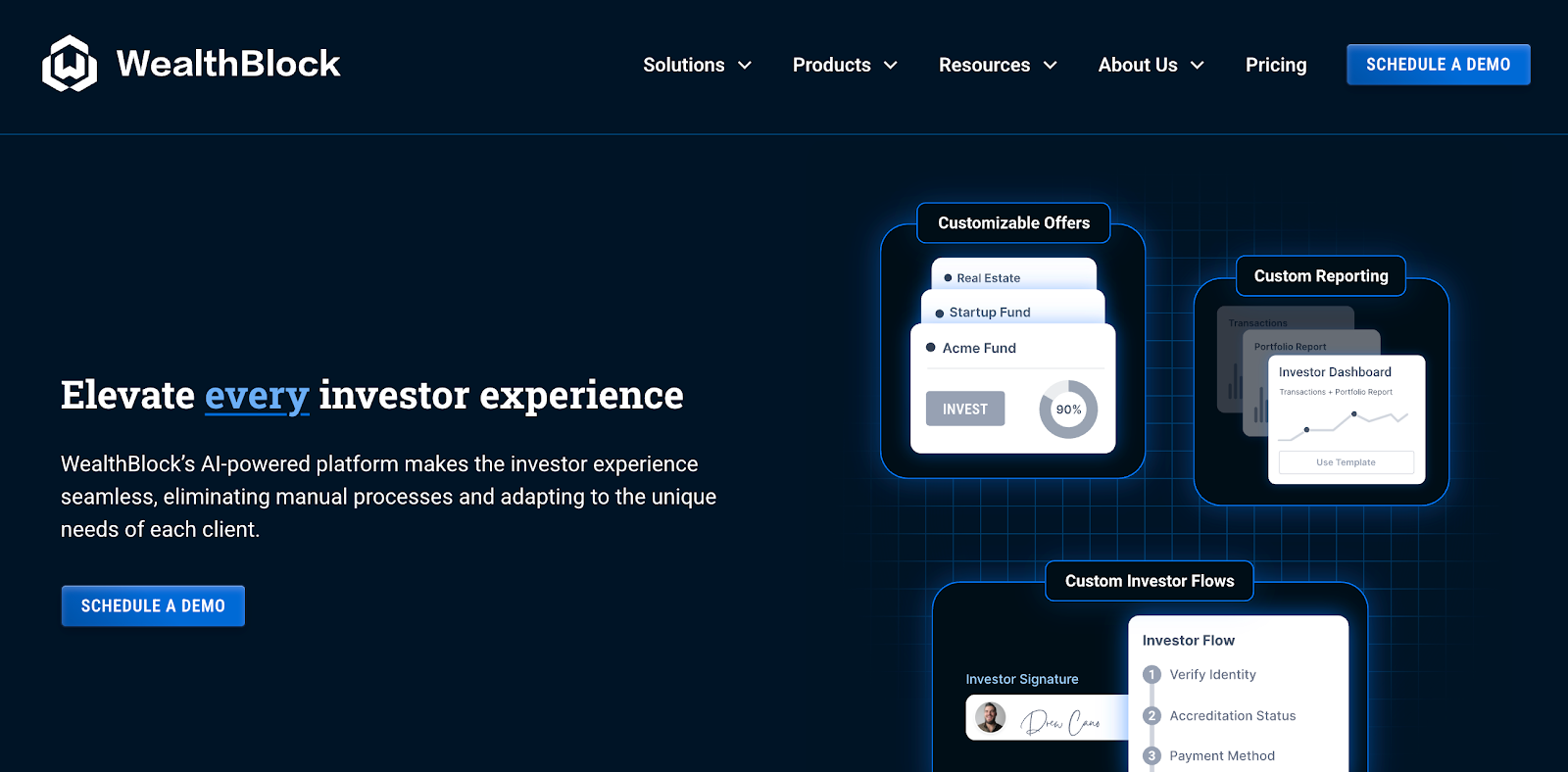
Fund managers know that capital raising doesn’t stop at pitching. You also need to onboard investors, manage documents, and keep communication smooth through every stage. WealthBlock helps private equity and venture teams do all of that in one place.
This platform supports general partners with digital workflows for onboarding LPs. It combines automation and investor portals to streamline outreach and maintain transparency with your investor base.
Key Features
- Modular platform with AI-powered workflows
- Custom onboarding for LPs and accredited investors
- Investor portals for updates and document access
- CRM syncing to track capital raising progress
- Personalization options for investor communications
Pros
WealthBlock simplifies capital calls, reduces back-and-forth, and helps teams manage ongoing updates more smoothly. It’s helpful for firms managing multiple funds or running rolling closes.
Cons
Some users want deeper integrations with external CRMs or accounting platforms. It may still require some customization to meet your due diligence.
WealthBlock only offers annual billing as monthly payments aren’t available without a 12-month commitment.
Pricing
- Starts at $2,500 per month
- Billed annually
- Supports up to 300 investors under the standard plan
If you're building an LP experience that balances automation with trust, WealthBlock helps you deliver valuable feedback and speed up your onboarding process.
4. HubSpot CRM—Best for Customizable Investor Pipelines
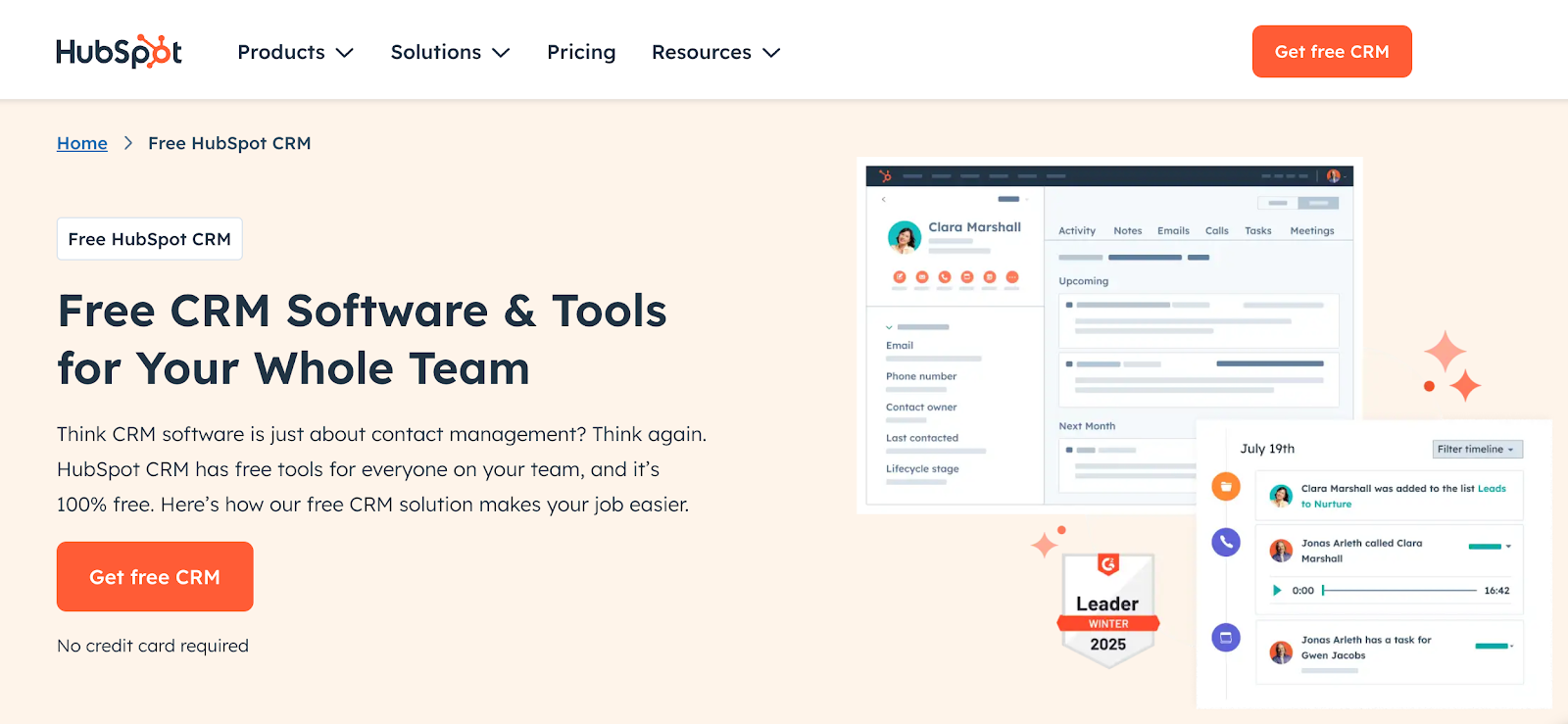
If you want flexibility and prefer to build your own workflow, HubSpot CRM gives you the tools to do it. While not built exclusively for investor relations, it serves as a strong investor relationship management software with plenty of room to scale.
The platform helps teams manage outreach and track interactions in one place, making it a suitable choice for firms looking to automate processes and customize based on their stage.
Key Features
- Contact and lead tracking with custom properties
- Visual pipeline builder for tracking investor stages
- Email templates, open tracking, and follow-up automation
- Meeting scheduler and shared inbox tools
- Analytics dashboards for outreach performance
Pros
HubSpot helps you streamline investor communication and build a repeatable process. You can also pull in investor data from other tools to support richer engagement.
Cons
Out of the box, it’s not tailored to investor use cases. You'll need to customize pipelines, fields, and dashboards to match IR needs. Some of the more advanced features also sit behind higher-tier plans.
Pricing
- Starter plan: $20 per seat per month
- Professional plan: $100 per month
If you're managing multiple conversations and looking to save time, HubSpot gives you control without locking you into rigid workflows.
5. Pipedrive—Best for Deal Flow and Pipeline Tracking
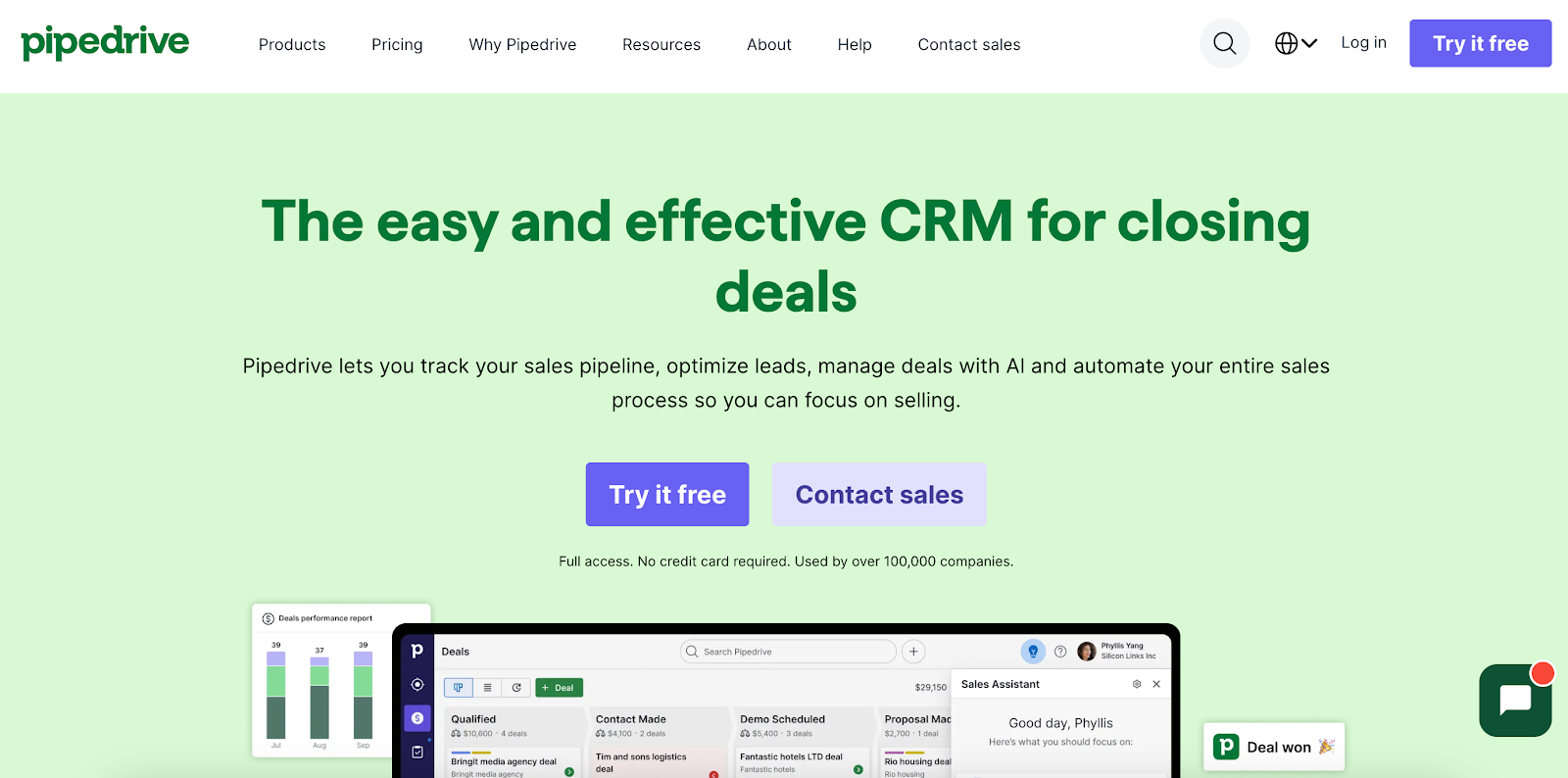
If you want a simple, visual way to track investor conversations, Pipedrive is a practical option. It’s not traditional IR software, but it works well for basic track interactions and pipeline organization.
Early-stage teams often use it to build lightweight processes around data-driven decisions without adding complexity. It's useful when you need to see where every investor stands at a glance.
Key Features
- Customizable visual pipelines for deal flow
- Email sync with open and click tracking
- Task reminders and activity management
- Workflow automation and lead routing
- 500+ integrations with tools like Gmail, Trello, and Zapier
Pros
It’s easy to set up and keeps your team focused. You can even plug it into tools you're already using and gain easy access to key investor workflows.
Cons
Limited reporting on lower plans. Lacks advanced IR tools out of the box and may not meet the needs of larger IR teams or IR professionals.
Pricing
- Essential plan: $24 per seat per month
- Advanced plan: $49 per seat per month
- Professional plan: $69 per seat per month
- Power plan: $79 per seat per month
- Enterprise plan: $129 per seat per month
Pipedrive gives small teams the ability to stay organized and move deals forward without overspending.
How to Choose the Right Investor Relationship Tool
Every IR team works differently. Some focus on closing capital quickly. Others manage quarterly updates, LP communication, or institutional engagement. The right tool depends on your workflow, team size, and what you need to improve.
Look for features like:
- Contact and activity tracking
- Customizable pipelines for outreach or reporting
- Email engagement insights
- Integration with Gmail, Outlook, or your CRM
- Analytics and reporting for investor updates or capital markets behavior
Also, think long-term. As your team grows or your IR program matures, you’ll want a system that scales with you. A good IR platform should support strategic decision making, help you track interactions, and give you visibility across touchpoints.
The best investor relations tools support strategic decision making, make it easier to track interactions, and give your team room to grow.
Connect With Investors Faster Using Village
Village turns your network into a strategic asset. It helps you get warm introductions by mapping second- and third-degree connections across your calendar, email, LinkedIn, and contacts.
You see who can introduce you to VCs, LPs, or co-investors. Village ranks every path by relationship strength and shared context, so you act on the connections most likely to respond.
You can manage outreach in real time. Use Kanban boards to track intro requests, enrich emails, and send double-opt-in intros without leaving the platform. Sync everything with your CRM to stay organized.
Village also supports your team. Combine advisor, founder, and investor networks into one unified view. Expand your reach without relying on cold outreach.
If you're leading an IR team, use Village to streamline LP communications and stay ahead on investor reporting. The platform helps you improve relationships with your key stakeholders.
Explore Village for free or schedule a demo to see how warm intros change your outreach.
FAQs About Investor Relations Tools
Which CRM works best for managing relationships with investors?
If you're looking for warm intros and trusted connections, Village is built specifically for that purpose. Other platforms may offer customizable pipelines or contact tracking, but Village is the only one focused on meaningful relationship mapping for investor outreach.
What does an investor relations platform do?
An investor relations platform helps you manage communications, monitor engagement, and support outreach. Some also include tools for event management, regulatory disclosures, and secure data sharing between teams. You can often integrate an IR website to streamline updates and documents for investors.
The best platforms help you leverage existing relationships and insights to drive more informed, efficient engagement.
What kind of work is involved in investor relations?
IR teams handle everything from capital updates and press releases to earnings calls and data-driven decisions. The work also includes tracking engagement, managing outreach, and gathering insights from the investment community to better inform company messaging.
How is investor relations different from public relations?
IR focuses on transparency with financial stakeholders, investors, analysts, and VCs, while PR targets broader media and public messaging. IR supports funding, valuation, and success through accurate communication with the people who influence capital.
It also helps enhance your company’s credibility by maintaining clear, consistent messaging over time.










